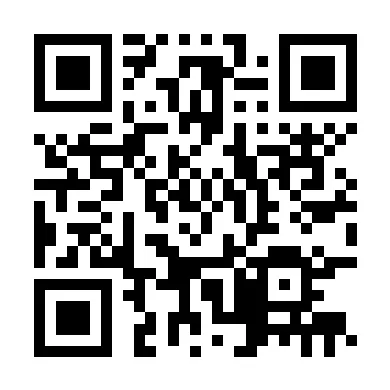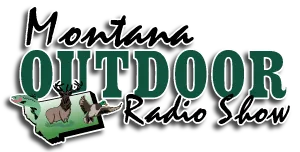Christmas tree permits go on sale October 13, 2023 at Recreation.gov and at your local ranger district office.
- Up to 3 trees can be harvested per permit for $5.00 a tree. If you purchase through Recreation.gov a $2.50 transaction fee will apply.
- Each permit obtained through the website allows you to purchase and record up to three trees to be cut; you must purchase 3 individual tags ($5.00 each) if getting your permit at a local office.
- Display your permit on the dashboard of your vehicle when you go out to harvest the tree(s).
- Carefully read the overview and need-to-know information prior to purchasing the permit.
- Visitors will need to set up or login to a Recreation.gov account to purchase their permit.
- It is your responsibility to know where you can and cannot harvest Christmas trees, and to follow all permit requirements.
- Have with you and follow all travel restrictions on a Motor Vehicle Use Map, available for free at our offices, or for mobile navigation on Avenza App.
- If you are unsure of the Forest boundary, maps showing ownership are available at Flathead National Forest offices.
Every Kid Outdoors Program
Free Christmas Tree Permits to 4th Graders!
 The Flathead National Forest is pleased to support the Every Kid Outdoors Program and provide FREE Christmas tree permits to all fourth graders! As part of the ‘Every Kid Outdoors’ (formerly Every Kid in the Park) national initiative which strives to connect youth with nature, the Flathead National Forest is offering one free Christmas tree permit to every fourth grader. To participate in the free holiday tree program visit www.everykidoutdoors.gov to obtain a pass. Bring your pass to your local Flathead National Forest office to receive a free Christmas tree permit. Or, visit Recreation.gov for the permit! Be sure to enter the Every Kid Outdoors pass number at checkout on Recreation.gov to receive the free Christmas tree permit (note: there is a $2.50 transaction fee when purchasing through Recreation.gov).
The Flathead National Forest is pleased to support the Every Kid Outdoors Program and provide FREE Christmas tree permits to all fourth graders! As part of the ‘Every Kid Outdoors’ (formerly Every Kid in the Park) national initiative which strives to connect youth with nature, the Flathead National Forest is offering one free Christmas tree permit to every fourth grader. To participate in the free holiday tree program visit www.everykidoutdoors.gov to obtain a pass. Bring your pass to your local Flathead National Forest office to receive a free Christmas tree permit. Or, visit Recreation.gov for the permit! Be sure to enter the Every Kid Outdoors pass number at checkout on Recreation.gov to receive the free Christmas tree permit (note: there is a $2.50 transaction fee when purchasing through Recreation.gov).
Cutting your Christmas Tree
Cutting your Christmas tree can improve or damage the forest. We ask you to follow these cutting guides, and have a safe and enjoyable outing.
Choosing and cutting a tree
- Christmas trees cut to thin overcrowded stands can be beneficial. As young stands of trees mature, they are constantly competing for more space. By cutting your Christmas tree from dense groups around the more vigorous trees, the remaining trees will grow faster to make our future forest.
- Tree species that are prohibited from harvesting for Christmas trees: whitebark pine, white pine, western red cedar. Learn more: Identifying tree species
- Make sure you cut your tree on public lands by checking the Flathead National Forest visitor map. Follow all motorized road and trail restrictions shown on the Motor Vehicle Use Map.
- Do not cut on private land, in wilderness areas, designated campgrounds, or existing tree plantations.
- Do not cut in active timber sales or areas that have been planted with new trees.
- Do not cut trees visible from major roads, in campgrounds, or in other well-used areas.
- Maximum tree height: 12 feet
- Stump height left after cutting: max 6 inches
- Stump diameter of cut tree: max 6 inches
- Cut the leftover branches from the stump and scatter them.
- Take the whole tree. Do not remove the top of the tree; cut down the entire tree
- If snow is on the ground, remove it from around the stump so you can accurately measure the stump and tree height.
- Carry your tree carefully out of the woods. Dragging the tree will rub off needles and bark.
- If the tree is too big to transport inside your vehicle, wrap it in canvas or tarp to prevent wind damage.
- Tools you might want to consider bringing with you include a measuring tape to ensure you select a tree that fits in your home; handsaw to cut your tree; gloves to protect your hands; boots to protect your feet; a tarp to sit on and/or to move your tree once it’s cut; and rope or straps to secure your tree to your vehicle.
Planning your trip
- Before you leave home, be sure to measure the space where you plan to place the tree in your home (height and width), and measure the space in your vehicle where you will be transporting the tree.
- You must print and bring your Christmas Tree Permit with you.
- Forest Service roads which are plowed in the winter may have logging traffic. Please drive safely, and be alert for other hazards that may occur. Park in an area where other traffic can get by safely.
- Roads may not be plowed. Carry tire chains, shovel(s) and a tow chain. Be sure your vehicle has a full tank of gas. Bring a spare key and give it to someone else in your party. Don’t get locked out of your car! Park in areas so that traffic can get by safely, and do not block gates.
- Bring plenty of food and water with you as well as an overnight survival kit in case you become stranded.
- Start your day early. Be sure to find your tree and leave the woods before dark.
Caring for your tree
- Once home, cut the bottom of the trunk off and place the freshly cut trunk in a bucket of water. Use a stand with a water reservoir and keep it full. A flat, even cut is best for water absorption. Replenish water regularly.
- If storing your tree outside for a few days before putting it in the house, keep it in an area protected from the wind, such as the north or east side of your house or under a shaded tree.
- Mist your tree with water.
- Inspect all tree light cords for safety. A dry tree can burn in only 15 seconds. Use caution with fire near your tree. Locate it away from heat registers, fireplaces & stoves.




